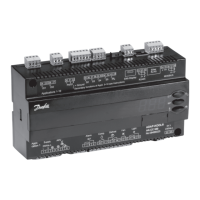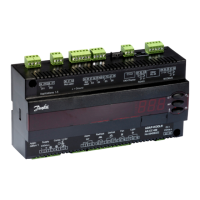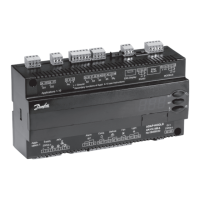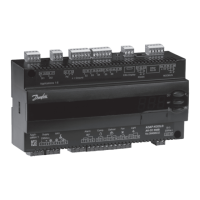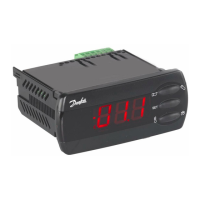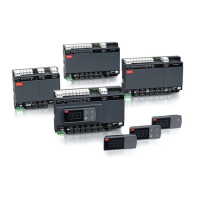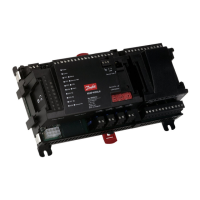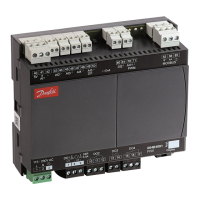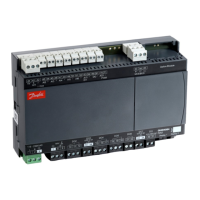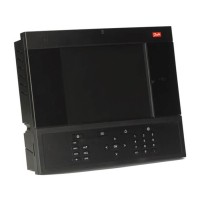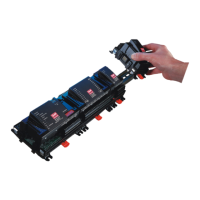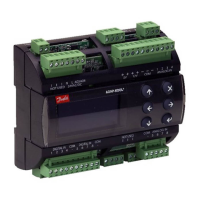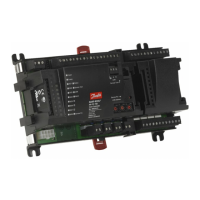
Do you have a question about the Danfoss AK-CC 750 series and is the answer not in the manual?
| Brand | Danfoss |
|---|---|
| Model | AK-CC 750 series |
| Category | Controller |
| Language | English |
Details the primary differences for US-version controllers regarding temperature, pressure, and setup.
Describes the controller's use in refrigeration and its main function for energy-efficient operation.
Explains the adaptive defrost function for optimizing evaporator performance and reducing energy waste.
Highlights benefits like flexibility and growth, and describes controller/extension modules.
Explains the process of defining module and point connections based on application needs.
Covers displays, network linking, user management, and external display options.
Explains LEDs, logging, alarm handling, and provides an adaptive defrost overview.
Describes the controller's modular design and its connection flexibility.
Details controller, extension modules, connection types, and programming of connections.
Details controller, extension modules, and AK operation/accessories.
Covers voltage, power, inputs/outputs, temperature limits, and approvals.
Provides physical dimensions for modules and assembled units.
Details controller functions, supply voltage, communication, address, and scan settings.
Explains the meaning of the various LEDs on the controller for status indication.
Defines terminal points for analog and digital signals, and their corresponding modules/points.
Details the module's 8 analog inputs, supply voltage, and status LEDs.
Describes 8 on/off voltage inputs for low/high voltage signals and their status LEDs.
Details supply voltage and status indicators for the modules.
Details the module's 8 relay outputs and override capabilities.
Covers supply voltage, fuses, and status LEDs for the relay output modules.
Details 8 analog inputs and 8 relay outputs, with override capabilities.
Covers supply voltage, fuses, and status LEDs for the modules.
Describes the real-time clock module with battery backup, connection, and placing.
Details battery working life and the alarm generated for replacement.
Explains how display modules show measurements and allow function setting.
Details the 24V supply function, voltage, power ratings, dimensions, and connections.
Specifies the connection points used on the AK-CC 750 for the Case Power module.
Covers ON/OFF signal types and lists key controller functions for planning.
Details analog and digital input/output connection types.
Lists constraints on connections, modules, and sensor usage.
Outlines the 12 steps for designing an evaporator control system.
Maps controller functions to appliance requirements.
Explains thermostat types, injection control, and adaptive superheat.
Details connections for analog/digital signals and pressure transmitters.
Shows an example system and the required modules for it.
Summarizes required connections and identifies missing ones for planning.
Calculates total power consumption for extension modules.
Explains module assembly, length calculation, and linking procedures.
Describes connection point principles and provides a survey example.
Shows how to draw connection diagrams for modules.
Explains how to calculate transformer size based on module power consumption.
Lists part numbers for controllers, extension modules, and accessories.
Describes how to mount extension modules onto the basic module.
Details the steps for moving the protective cap and assembling modules.
Details how to connect inputs and outputs based on function tables.
Covers network communication, supply voltage, LED status, and installation steps.
Introduces the chapter on controller configuration and operation.
Details a freezing appliance setup and the modules used in the example.
Explains connecting the PC, starting Service Tool, and logging into the controller.
Guides through setting authorization levels, user names, and access codes.
Details the process to unlock the controller's configuration for changes.
Covers controller name, frequency, alarm language, and clock settings.
Guides on choosing plant types and adjusting related settings like refrigerant.
Explains thermostat types (ON/OFF, modulating) and related settings.
Details setting thermostat and alarm parameters for individual sections.
Explains defrost types, start methods, schedules, and adaptive defrost.
Details fan control, anti-sweat heat, compressor control, and case cleaning.
Covers door switch, light control, forced closing, and alarm relay settings.
Details configuring digital outputs and inputs for various functions.
Guides on configuring analog inputs for sensors and pressure transmitters.
Defines priorities for temperature and sensor error alarms.
Sets priorities for alarms like standby mode, refrigerant change, and case cleaning.
Explains how to lock the controller's configuration after setup.
Checks digital and analog I/O configurations against wiring.
Checks if inputs and outputs are correctly connected and register signals.
Reviews thermostat and alarm settings via the display.
Verifies expansion valve, injection, and defrost settings.
Details setting the defrost schedule and checking common functions.
Guides on setting address, Service Pin, and network communication.
Explains how to check active alarms and remove cancelled ones.
Details how to start the controller and activate the main switch for operation.
Explains how to set up new logs and select parameters for data logging.
Provides steps for initiating and carrying out a manual defrost.
Introduces the chapter describing how different regulating functions operate.
Explains thermostat control with AKV and TEV valves, and ON/OFF types.
Details individual ON/OFF and modulating thermostat control per evaporator.
Details how valve openings are displaced for even loading.
Explains sensor usage for individual and common thermostats.
Describes changing between two thermostat settings based on product or conditions.
Explains the melting function to prevent evaporator frost buildup.
Covers setting alarm limits, time delays, sensors, and frost alarms.
Details fan control, anti-sweat heat control methods, and settings.
Covers appliance cleaning, shutdown, door contact, and light control.
Explains night blind control, forced closing, and alarm relay setup.
Explains liquid injection principles and refrigerant selection.
Details adaptive superheat control using AKV valves.
Explains defrost types, start methods, schedules, and adaptive defrost.
Details the steps in a typical defrost sequence, including emptying and heating.
Explains delayed fan start and provides a hot gas defrost example.
Explains the different modes for adaptive defrost function selection.
Describes adaptive defrost status, sensor requirements, and refrigerant limitations.
Details alarms for non-defrosted appliances, air flow, sensor errors, and flash gas.
Covers setting alarm priorities, forced refrigeration, and sensor correction.
Explains display settings, LEDs, and button operations for configuration.
Guides on how to set and save temperature values.
Explains how to read codes displayed for operating states.
Provides guidance on initial setup steps and display usage.
Details status displays for thermostat, alarms, injection, defrost, and compressor.
Highlights potential installation issues and best practices.
Lists alarm texts and priorities for temperature, sensor, and various alarms.
Details system alarm conditions, priorities, and troubleshooting.
Explains installation types and provides a description glossary.
Provides detailed IO assignments for various installation types.
